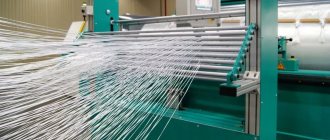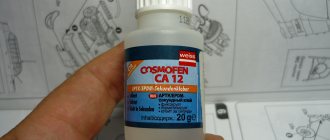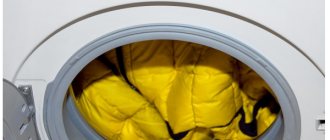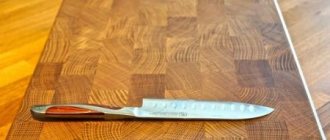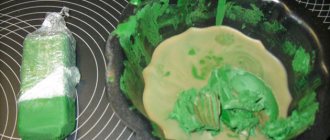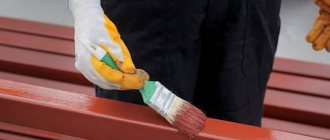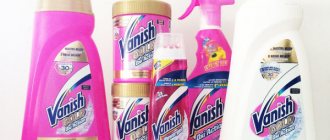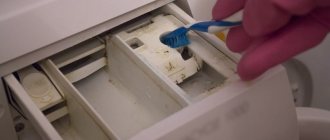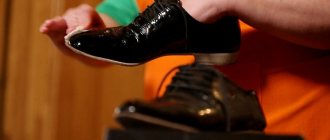Sintepon is a popular type of insulation in many countries. The material is used to create all kinds of products. The product has many advantages, but at the same time it is not without some disadvantages. The material describes in detail: what synthetic winterizer is, in what areas it is used, what varieties exist, and under what circumstances this product was created.
What is padding polyester
Synthetic winterizer refers to a non-woven material that belongs to the category of synthetic insulation. In the process of its production, different bases are used:
- polyester threads;
- secondary raw materials (polyethylene).
Sometimes synthetic winterizer contains some natural compounds and is combined. The material can have varying degrees of density.
Synthetic winterizer is light, soft and elastic. A high-quality product is very practical and can withstand active use without problems.
The filler is made in several ways:
- By gluing fibers using a special composition. This version of the material, called emulsion, has the most budgetary cost.
- Through heat treatment of the fibers, during which the threads are slightly melted and bonded together. The resulting result is known as Eurosintepon.
- The needle-punched method involves connecting threads using needles with small notches. This type of padding polyester has the highest price.
Products made using the needle-punched method are considered the most reliable and safe. Synthetic winterizer obtained through heat treatment has average quality indicators. The least appreciated option is the filler created by gluing.
Good to know! There is a simple way to determine how high quality the padding polyester filler is. To do this, you need to crush it well in your hand. A high quality product that meets GOST requirements will quickly return to its original shape. A low-grade product will remain deformed.
Types and their properties
Sintepon is a non-woven material. Depending on the production technology, experts distinguish the following types of padding polyester:
- wool (sherstepon);
- synthetic fluff;
- holofiber.
It is worth considering each type of padding polyester in more detail.
Holofiber
Currently, there are several varieties of holofiber.
- Holofiber Soft. High air permeability does not interfere with thermoregulation and retains its shape after repeated washing. This material is used for sewing high-quality fashion clothing, insulated clothing for athletes, suits for climbers and tourists, as well as for sets of children's clothing.
- Holofiber TEK. This is a professional insulation for winter clothing for oil and gas field workers. It is resistant to solvents and fuels and lubricants, does not wrinkle when washed, and is resistant to low temperatures. This option is used for sewing workwear and personal protective equipment.
- Holofiber Stroy. This is a low-temperature insulation for walls and floors. It is recommended to use it as a thermal liner or inter-crown seal. Its advantages include low thermal conductivity and good sound insulation.
- Holofiber Volumetric. This is a popular insulation for children's clothing. It does not cause allergic reactions, does not wrinkle during wear, and does not burn in direct contact with an open flame.
- Holofiber Hard. This option is used in construction practice as thermal insulation. It does not shrink, absorb moisture or generate dust.
- Holofiber Medium. It is used to make baby kits, maternity hospital discharge envelopes, crib bumpers, as well as pillows and mattresses for babies.
Sherstin
Synthetic winterizer with the addition of camel or sheep wool is used in the production of belts made from dog, camel or sheep wool. The belts have a lasting therapeutic effect without pills, ointments and injections for diseases of the musculoskeletal system (bruises and fractures, neuralgia, radiculitis, arthritis, arthrosis, osteochondrosis, neuritis). The belt does not have a stimulating effect on the growth of a cancerous tumor. Warming leggings and knee pads made of sherstepon with the addition of viscose are used by athletes during intense outdoor activities in the winter. Underwear is made from sherstepon with the addition of 10% lavsan, which is worn by high-altitude installers during the construction of power lines and fitters when performing routine work on replacing insulators on the supports of high-voltage power lines in the cold season beyond the Arctic Circle, in Siberia, Yakutia and the Far East.
Sintepooh
Fluffy padding polyester with the addition of natural down is used to fill pillows, overalls and winter blankets. It does not form lumps, does not require periodic drying in the sun and does not absorb unpleasant odors.
Filler properties
Synthetic winterizer looks like a soft, light and elastic material with a uniform porous structure. It is unusual for it to absorb liquids or be filled with foreign odors.
Most often, padding polyester has a pure white color. Expensive varieties are lighter and airier. Budget products may have a greyish, yellowish or brown tint. It quickly loses its original characteristics.
Below is a table listing the main properties of padding polyester:
| Structure | Fiber weave |
| Width | From 1.5 to 2.5 m |
| Thickness | Within 0.5-15cm |
| Density | 50-400 g/m² |
| Thermal conductivity | 0.031 W/m °C |
| Wrinkleability | High-quality material is wrinkle-resistant |
| Temperature tolerance | In the widest range |
| Ability to retain heat | High |
| Period of use | Average |
| Environmental friendliness | Acceptable |
| Features of care | Does not require complex processing |
The classic material contains 100% synthetics. Other types of padding polyester containing natural or artificial additives are also produced. New methods and technologies are used in the production of such products.
Thermal method
This method involves gluing the fibers of the fabric when exposed to high temperatures. The connecting link is polyester fiber, which has a fusible coating - some of the fibers melt and thus stick together. A product made from such padding polyester will be more resistant to wear, and after washing you will receive it in its original form. It is characterized by such qualities as amazing heat-shielding properties and low weight. This synthetic winterizer has another name - Euro synthetic winterizer.
What different types of product look like
There are many options for padding polyester on the modern market. The following are the main types of nonwoven material, taking into account the processing method used:
| Calendered | Such a product is subject to heat present on one or both sides. As a result, it is possible to obtain a material with a smooth surface. Its important advantages are a high degree of elasticity and inability to deform after mechanical stress. Calendered padding polyester can be found in a wide variety of products. |
| Siliconized | A similar term is often used to describe the popular holofiber filler. It is formed by numerous hollow fibers and has such characteristics as lightness, bulk, and inability to roll. It can be sheet or made in the form of small balls (lumps). Like the calendered look, this option has a reputation for being universal. |
| Ultrastep | This is a quilted padding polyester without threads. In its production, a special advanced technology called thermal stitching is used. This type of product is used to insulate clothing for adults and children. |
There are other types of filler. These include:
- woolpon;
- synthetic fluff;
- synthetic plastic.
These types of filler are not very common. For this reason, many consumers are interested in what they are made of.
Woolstipon is a combined type of material consisting of polyester fibers and natural wool (sheep, camel, goat). The amount of natural component in this version of padding polyester varies from 20% to 50%. Woolstipone is used to fill the inside of items intended for very low temperatures.
Synthetic fluff is a completely artificial material. It is produced by twisting polyester fibers into spirals. The features of synthetic down for which it is most valued are excellent breathability, volume retention, inability to accumulate static electricity, and maximum service life. The product is considered universal.
Sinteplast is made according to an updated principle. It differs from other varieties in that it includes a silicone component. This material has increased elasticity. It is mainly used as a filler for furniture and blankets.
Caring for things with padding polyester filling
It’s clear what padding polyester is made of, now you need to decide how to care for it:
- Hand wash or machine wash on delicate cycle is suitable;
- you need to wring things out manually;
- It is recommended to dry in the fresh air or in a well-ventilated area;
- if there are stains on the product (often happens with children's clothes or toys), they must first be removed by soaking the item in a stain remover;
- When washing, use a water temperature of no more than 30 °C;
- You cannot iron or steam things, because synthetics melt under the influence of high temperatures.
How to wash synthetic fillers
Types depending on density
Also, synthetic winterizer is divided into other varieties related to its density. The latter is indicated in the form of numbers and is indicated in g/m². The higher the mentioned indicators, the higher the product’s ability to protect against cold.
Filling with a maximum density of 400 g/m² is ideal for frost. It will help you easily endure temperatures that reach critical levels (within -25 °C or more).
The 300 g/m² option is usually used to insulate a winter wardrobe. This material reliably warms in harsh weather conditions. The recommended temperature is -20 degrees.
Sintepon 200 g/m² is quite common, so many are interested in what temperature it is designed for. This option is intended for the off-season. Items with this filling should also be worn in mild winters. They are intended for use at temperatures within -10 degrees.
Products in which the density of synthetic insulation is 100 g/m² are not suitable for cold weather. The optimal temperature for them is from +5 degrees.
Thin filler with a density rating of 80 is designed for +10 °C. If this level is 50 g/m², the product is intended for temperatures not lower than +15 degrees Celsius.
Quite often the question is asked - what type of padding polyester is needed for a blanket. When creating such bedding, filler with a density of 200-300 g/m² is traditionally used.
Needle-punched method
With the needle-punched method, fibers are fastened mechanically by weaving and fixing fibers of different directions on the surface of the fabric with special needles. When compared with other methods, padding polyester made using this technique will be of higher quality and resistant to mechanical stress.
Scope of application
Sintepon is a truly universal product that can be present in a wide variety of products. The filler is used for the following purposes:
- For warming outerwear. Various types of padding polyester are found in winter and demi-season items (jackets, windbreakers, coats, down jackets).
- In the manufacture of products for children. Insulation is included in overalls, trousers, waterproof mittens, duvets, and envelopes for babies.
- For filling tracksuits, hats, and women's skirts designed for cold weather.
- When creating all kinds of accessories (bags, backpacks, wallets), products for the tourism industry.
Synthetic padding is often found in soft toys. It is used in the production of pillows, bedspreads, and mattresses.
Attention! For products intended to be in direct contact with the owner (primarily clothing), padding polyester is used that is not made from recycled materials. Only in this case is it considered safe for the human body.
The filler finds its application in other areas. Sintepon is used in the production of upholstered furniture. It reliably maintains the shape given to such products, making them textured and elastic. In this case, options of large sizes and with a maximum thickness reaching 15 cm are used.
The material is also used in construction work. In this case, it is used in the form of thick synthetic padding and serves to insulate rooms. The product can be used as a filter for air purification. To perform such an important task, it is often placed in aquariums. The material has also found its application in swimming pools.
Types of products made from padding polyester
Sintepon filler is used for different purposes:
- for the production of armchairs, sofas and other upholstered and office furniture;
- as an insulating material for autumn and winter clothes - jackets, vests, overalls, coats;
- in construction it is used to insulate walls and floors (in addition, it has noise insulation properties);
- synthetic winterizer fabric serves as filters for water, aquariums, and some swimming pools;
- they are used to fill soft toys, gift pillows, mattresses, and blankets.
You might be interested in this Description and features of universal microfiber cloths
Decorative synthetic pillows
Advantages and disadvantages
Experts unanimously agree that padding polyester has many more advantages than disadvantages. The main advantages of this material include:
- lightness and airiness, thanks to which the filler makes various types of products light and easy to use;
- elasticity, allowing the filler to instantly take its original position and restore the shape specified during production;
- high degree of thermal insulation, preventing the penetration of cold air;
- durability, the ability to serve usefully for many years;
- resistance to liquids, giving maximum comfort in conditions of high humidity;
- hypoallergenic, excellent tolerability by sensitive people and very young children;
- affordable cost - today, synthetic winterizer is considered the most affordable insulation material and at the same time is not inferior to other analogues.
The weak point of the filler is its fragility due to improper care. If you violate the rules for handling padding polyester (wash it incorrectly, store it in the wrong places, etc.), it will roll up quickly enough. When used as insulation in outerwear, such material will no longer protect its owner from the cold.
Disadvantages also include a low degree of air conductivity. In jackets with thick synthetic padding, there is no full access to air, so a greenhouse effect is formed. This causes inconvenience during sports and other types of physical activity.
Good quality padding polyester can withstand washing without problems, but cheap types of material cannot boast of this ability. After numerous treatments, they often lose their original thickness and become less effective at low temperatures.
Note! Synthetic winterizer products have a reputation for being hypoallergenic, but this does not apply to fabrics produced using the adhesive method. For this reason, conscientious manufacturers do not include it in clothing and children's products. Also, such options are not used in residential premises. At the same time, emulsion insulation is often used as a material for handicrafts.
Pros and cons of padding polyester
Synthetic fabric produced by the needle-punched method has a number of advantages, including rapid restoration of its original shape, good thermal insulation, and elasticity. It is also worth noting that this type of insulation is sold at an affordable price.
This safe material does not cause the development of allergies, with one exception: some people have an allergic reaction to the filler obtained by the adhesive method. This happens due to the fact that unscrupulous manufacturers use low-quality glue to reduce the cost of the product. Therefore, before purchasing, you need to carefully select a product, paying attention to the label, cost and selection tips.
The disadvantages include the fact that synthetic winterizer is not suitable for our winters: when the temperature drops to -10 degrees Celsius and below, its use is impractical. Another disadvantage is that it does not allow air to pass through well, causing a person to sweat.
How to care for padding polyester
Caring for padding polyester filler must fully comply with the manufacturer's recommendations. If such rules are not followed, the material quickly loses its original properties and becomes unsuitable for use.
You need to care for the padding polyester as follows:
- Periodically wash the product. Processing can be done manually or in an automatic machine operating in delicate mode.
- Wash items containing a synthetic padding product inside at low temperatures (within +30 degrees).
- Use gentle detergents. It is best to choose liquid formulations that do not contain chlorine.
- Avoid intense squeezing and twisting. After such exposure, many types of filler become crumpled.
- Do not resort to steaming. It is permissible to iron clothes with padding polyester only through thick fabric. For safe ironing, the iron is set to the minimum temperature setting.
- Avoid intense heat exposure when drying. It is advisable to dry items with filling away from sources of intense heat.
If not properly cared for, synthetic winterizer often clumps into clumps. This situation can be corrected by carrying out a new wash in a machine using tennis balls. There is no need to add a foaming agent. The remaining tubercles need to be straightened with your hands. If the filler is removed from the product, it can be combed out.
Features of care
Outerwear, which is sewn using synthetic winterizer, is quite unpretentious and does not cause any particular difficulties in care. Quilted items can be safely washed and ironed, as well as sent to dry cleaning. You can wash outerwear with this filling in a washing machine, setting it to the delicate cycle and not exceeding the washing temperature of 40 degrees. Be sure to check the washing instructions on the product label. The coloring of water during washing (shedding) does not depend on the padding polyester, but on the type of fabric of the product.
If it is necessary to clean dirt on upholstered furniture with padding polyester filling, use a liquid detergent. Apply the foam solution with a sponge and gently wipe the case. Remove excess detergent with a damp cloth and rinse it in clean water. Wait until it dries, then vacuum the upholstery thoroughly to remove any remaining detergent. Or use specialized products for cleaning upholstered furniture according to the instructions on the package.
Despite the still great popularity of this type of filler, insulating clothes with padding polyester is considered an outdated method. There are much more effective materials, such as down, thinsulate or synthetic down. Sintepon filler is most in demand and popular among manufacturers of blankets, pillows, upholstered furniture and toys.
Origin story
The date of creation of the first version of padding polyester is considered to be 1935. At this time, British researchers were engaged in the synthesis of PET (polyethylene terephthalate) and managed to obtain a previously unknown material. For some period, the world did not know about such a discovery, but 6 years later the British officially patented it. After this, many countries around the world joined in the production of the new product.
In 1949, a product was created in the USSR that was in many ways similar to modern padding polyester filler. At first it was called lavsan. This word became an abbreviation for the name of the laboratory of macromolecular compounds belonging to the Soviet Academy of Sciences.
In 1960, Japanese specialists made a serious contribution to the development of new products. Scientists in this country have developed an original method for bonding synthetic fibers. They found that the filler can be made by applying heat to its base. Thanks to the use of this technology, manufacturers began to produce large canvases. In the new type of padding polyester, the fibers adhered to each other much better, which helped improve its quality.
On Wikipedia, the term “sintepon” combines various types of fillers of artificial origin. Today, padding polyester materials remain the most budget-friendly and are constantly expanding the scope of their application. Products created almost 100 years ago are not inferior in popularity to new versions of insulation and are present in a wide variety of products.
Description
To understand what it is, let’s talk about what the “correct” padding polyester should be and what is meant by this concept.
It is known that padding polyester is also called synthetic batting. Sintovatin is actually its improved artificial copy. It is a non-woven fabric and consists entirely of synthetic fibers. They can be obtained from both primary and secondary raw materials.
There are the following types of materials that can be combined under the general concept of “sintepon”, but still they have “independent names”:
- Sherstepon (wool);
- Synthetic fluff;
- Holofiber.
They represent an improved formula of the original version of this material, which manifests itself in the addition of additional elements (sherstepon) or the peculiarities of fiber formation (synthetic fluff, holofiber).
Read about: Thermofinn
Sherstepon (woolstin) is combed sheep wool joined with artificial fibers. In this case, synthetics eliminate pilling and “churning.”
Synthetic fluff is obtained from polyester fiber by combing. It is warmer than natural down.
Holofiber consists of hollow fibers and is manufactured using the thermal bonding method.

